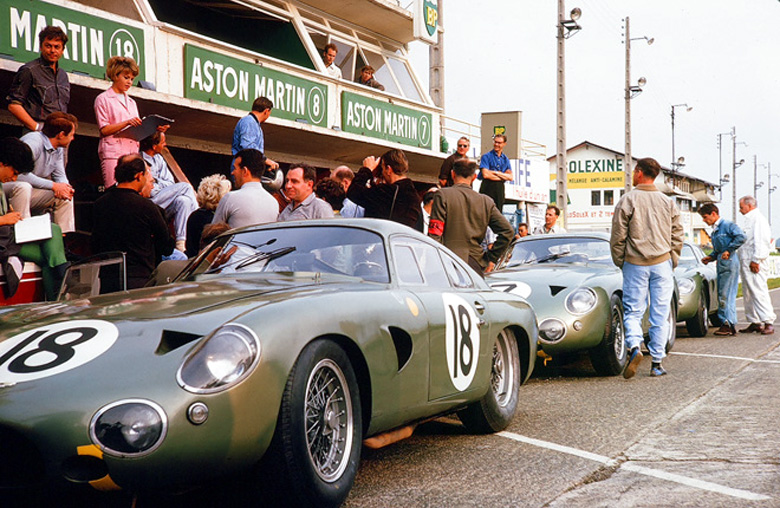
Le Mans, June 1963. Aston Martin’s project cars during practice, headed by the DP 215 of Phil Hill/Lucien Bianchi. Bill Kimberly is seen next to his #7 DB4GT, internally known as DP 214. (Ed Matsuishi)
By Willem Oosthoek
After a disappointing finish with the Cunningham Jaguar E-type at Sebring in March 1963, Bill Kimberly picked up his corporate job in London again and did not expect to do much racing for the rest of the season, with -perhaps- Le Mans and the Cunningham team being the exception. An unexpected call changed things completely, thanks to one of Bill’s occasional boarders in the London apartment.
Bill: “A year after Richie Ginther had stayed with me, I got a call from John Wyer, inviting me for lunch in the executive dining room at Aston Martin. It was a fun experience and kind of unreal. It was just the two of us, having very formal conversation about everything but race cars. During coffee Wyer asked me ‘Would you like to drive for us at Le Mans and some other races? Richie Ginther said you are a good driver and that’s all I need.’ They hired me without any testing or seeing me in a car. I never stopped thanking Richie!”
After winning Le Mans in 1959, Aston Martin had focused on Formula One racing, which turned out to be a mistake since their cars were heavy, front-engined and increasingly obsolete. In 1962 an initiative to capture another Le Mans victory was started, the Project DP 212 Aston Martin Coupe. Raced by Graham Hill and Richie Ginther, this 4-liter prototype was fast, but it retired with engine problems.
Before its retirement, some of the jousting was done with Bill’s Maserati Tipo 151, which must have impressed Ginther and, while watching from the pits, impressed Wyer as well.
For 1963 Aston Martin introduced three new Le Mans Coupes: a 4-liter DP 215 prototype and two 3.7-liter race versions of their DB4GT model, called the DP 214 internally. These so-called Grand Touring models had a completely different chassis design from the one used on their regular DB4GT, but John Wyer thought he could get away with breaking the homologation rules. And he did, since the FIA never caught on! DP 215 was assigned to Phil Hill and Lucien Bianchi, while the DP 214 “GT” cars went to Bill Kimberly/Jo Schlesser and Bruce McLaren/Innes Ireland.
For the first time Le Mans allotted its starting grid positions based on practice times, rather than engine size, and Bill qualified 10th fastest with a lap of 4:04.7. The chassis number of his Aston Martin was 0194/R.
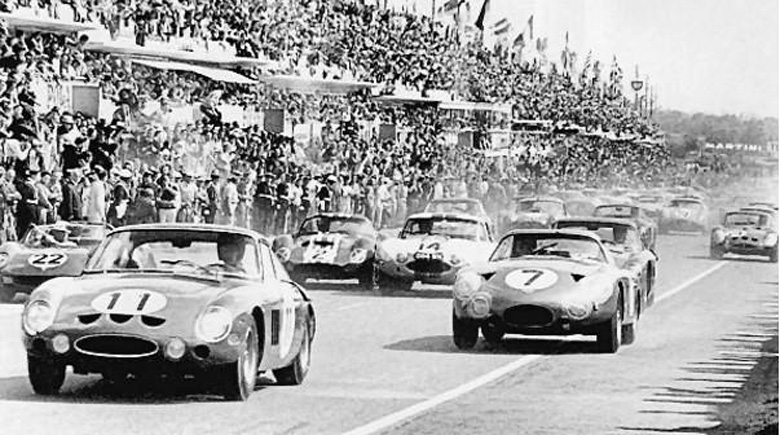
Le Mans, June 1963. Bill started well in the #7 Aston Martin. Dan Gurney is in the #11 Ferrari 330LMB, Mike Parkes in the #22 Ferrari 250P, Andre Simon in the #2 Maserati Tipo 151/1 and Walt Hansgen in Cunningham’s #14 E-type, which would retire all too soon. (Bill Kimberly Collection)
Bill: “At Le Mans Phil Hill and I were roommates in our hotel, and I shared the DB4GT with Frenchman Jo Schlesser, a very good and consistent driver. After taking over the Aston from him, you would find it in exactly the same condition you had left it. In the night, during my third stint, I was running 4th overall and 2nd in GT behind Carlo Abate’s Ferrari GTO. I passed him, at Arnage I think, so we were 3rd overall and leading the GT class. I had done two consecutive stints that night, about five hours of racing. When I got out of the car, Phil Hill was there on the pit wall. He grabbed my hand, pulled me up and said, ‘That was brilliant, Bill.’ Unfortunately, during Jo’s next stint, between midnight and 2AM, a piston broke. Later on, John Wyer wrote to tell me that the pistons had been miscast by the supplier.
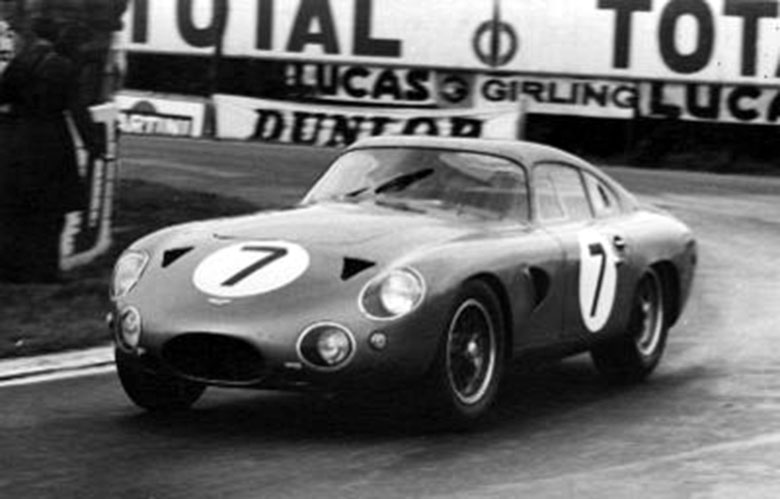
Le Mans, June 1963. Taken at Mulsanne corner, the Aston Martin DB4GT that Bill and his co-driver Jo Schlesser brought up to 3rd overall until a miscast piston caused its retirement. [Henri Beroul]
Bill’s car was the last of the three Aston Martins to retire. “I also tested the Aston Martin DP 215 prototype and both GT cars at the MIRA test track in England. For three days we were testing various set-ups and tires. The Aston people told me that I missed the lap record by a second.”
Bill’s next Aston Martin appearance came at Brands Hatch’s International Guard Trophy, a Bank Holiday event on the first Monday in August, where things went less smoothly. “Practice was a lot of work since I had to qualify all three cars, including the ones of Bruce McLaren and Innes Ireland. They were still at the German Grand Prix that weekend. At the start, my brake pedal went right to the floor. I did not want to pull out, so I raced in the middle of the pack. Something was definitely wrong with the brakes, which I later found out were experimental. By the 20th lap I had no brakes at all, and I stuffed the car into the bank at Dingle Dell. Later on, I was scheduled to race at Monza, but work interfered.”
Thus ended Bill Kimberly’s last full race season. In 1964 he did not race at all and his final race came in September 1965 at his favorite track, for the Road America 500. After three years in London, he had been reassigned to Wisconsin by Kimberly-Clark. But since Briggs Cunningham had retired from racing, Bill had no competition car to drive. Bill: “So I bought a second-hand Elva Mk 7/Porsche for $6,400 from Ed Weschler in Milwaukee and asked Denise McCluggage to be my co-driver at Road America. I had met her in London once or twice when she was doing some project with Ken Purdy. The car ran great and we finished 8th overall, 2nd in the under 2-liter class behind the 1965 USRRC winner George Follmer in a Lotus 23/Porsche. We beat three other Elvas.”
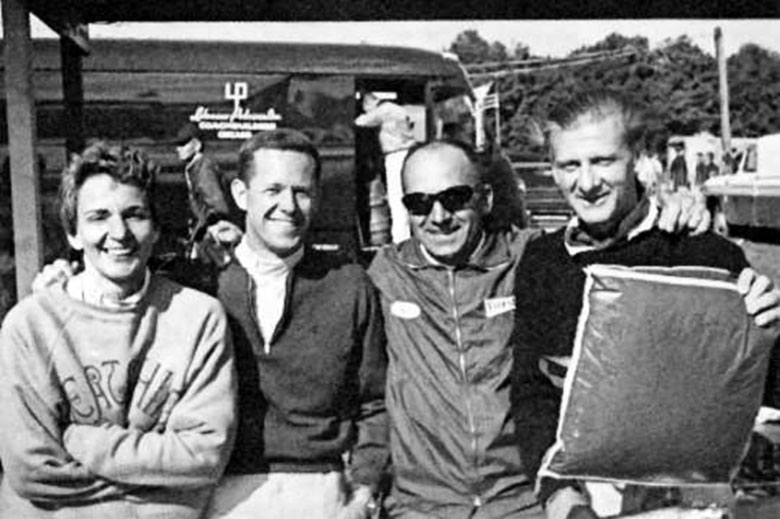
Road America, Wisconsin, September 1965. Bill just before the start of his last race, with co-driver Denise McCluggage, mechanic Bob Lang and team manager Frank Falkner. (Bill Kimberly Collection)
In November of 1965 Bill married Elena Guajardo of Mexico and this made him decide to put an end to his racing days. His Elva/Porsche was sold via Augie Pabst’s car agency for $3,300. Over the years, Bill’s job with Kimberly-Clark took the couple to Argentina, Mexico, and Australia. Altogether, they lived overseas for 16 years. Bill retired as a Senior VP from the firm in 1983 and became an investment banker. By 1992 he became Chairman of the NAZTEC International Group, an investment firm headquartered in McLean, Virginia, where he also domiciled with Elena and their three daughters.
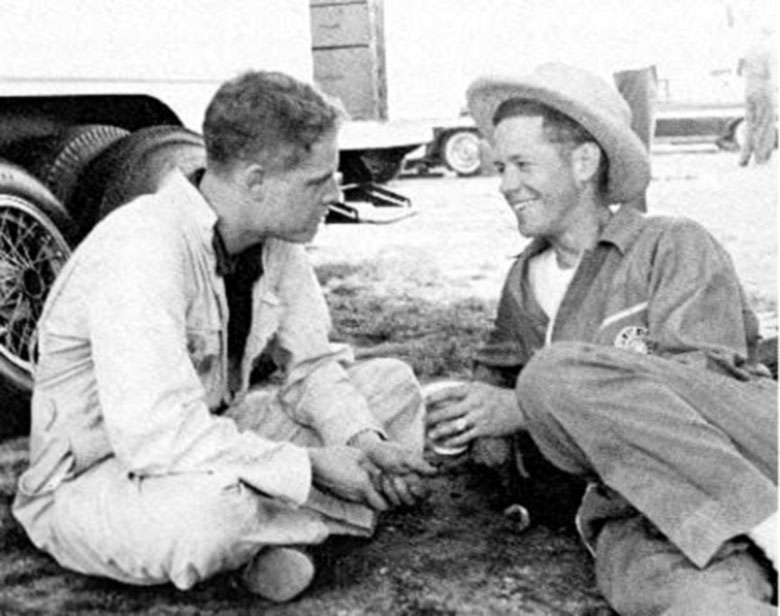
“But Augie, that Elva/Porsche of mine is surely worth more than the $3,300 you are offering?” (Bill Kimberly Collection)
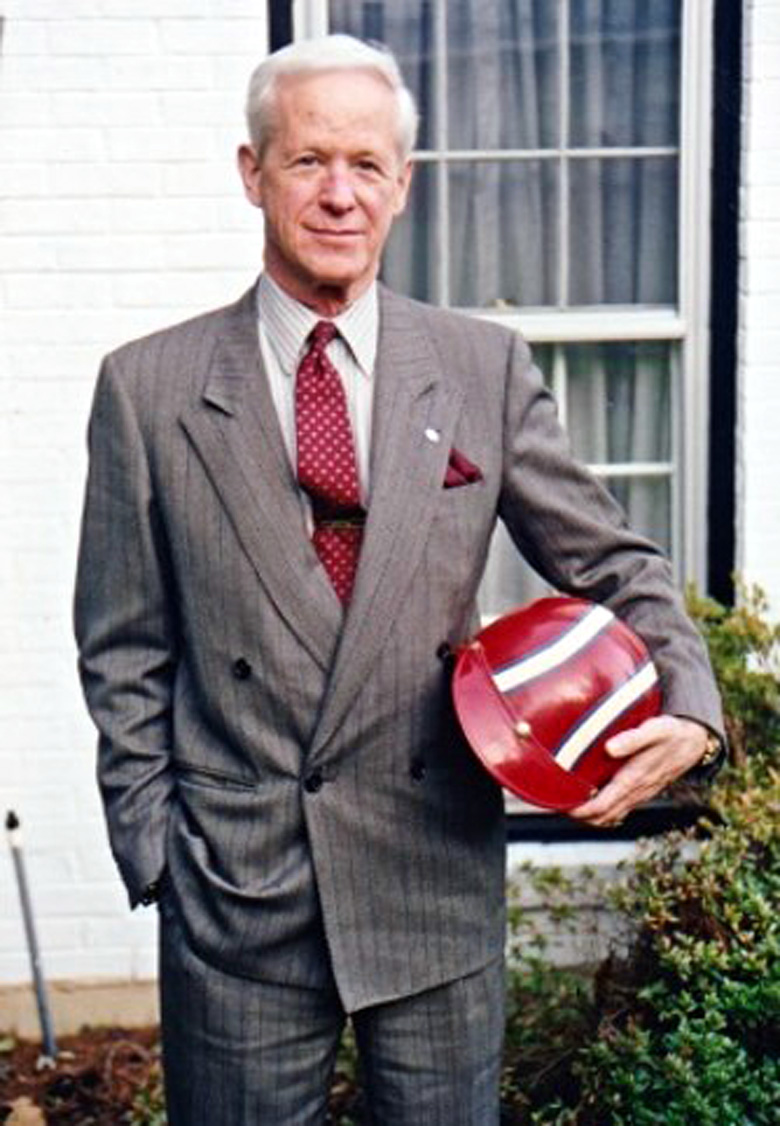
Bill and his old Bell helmet in 1997, in front of his McLean, Virginia, residence. (Willem Oosthoek)
In 2000 Maserati invited Bill and Elena to join in the celebration of the marque of the Trident at
Monterey. They were reunited with many of Bill’s fellow racers: Augie Pabst, Jim Jeffords, Phil Hill, Carroll Shelby, Bill Krause and others. While busy autographing, Bill was seen next to the Tipo 63 he raced in the 1961 Road America 500. And at dinner he joined the table with Carroll Shelby, who reminded him that he shared an OSCA once with Uncle Jimmy at Road America in 1956. Carrollrecalled: “That OSCA purred like a kitten, but she handled like a dog!”
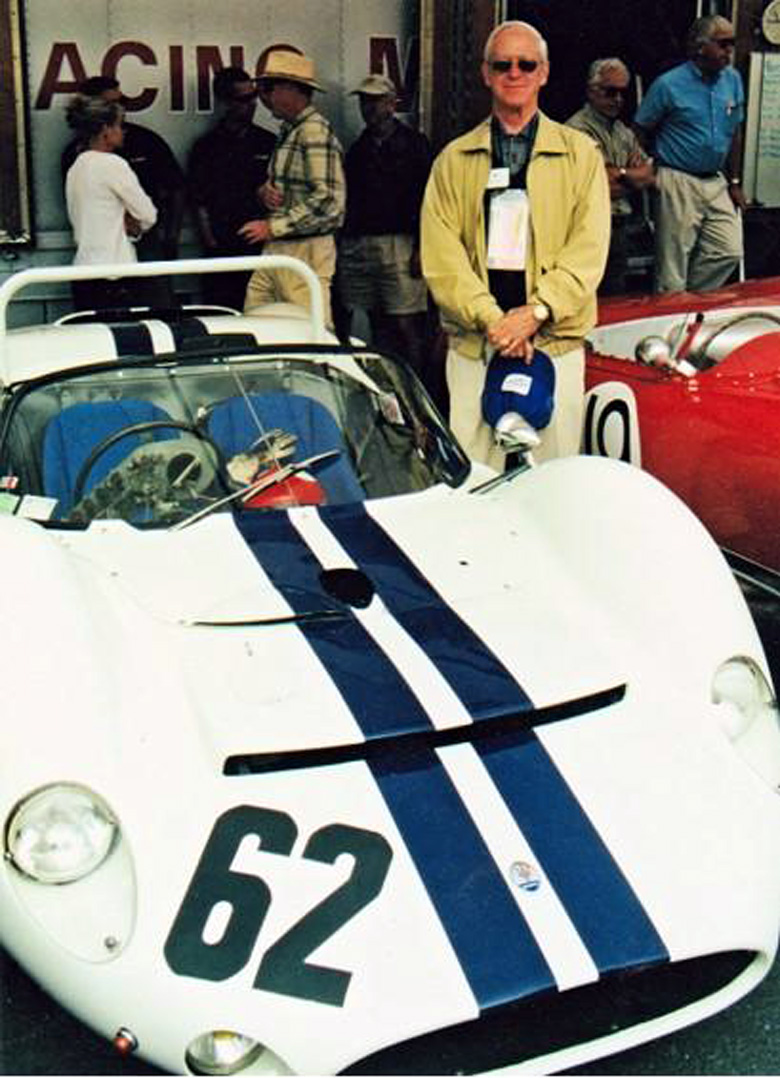
Monterey, California, August 2000. Reunited with the rear-engined Maserati Tipo 63 (the long wheelbase 63.002) he raced for Briggs Cunningham at Road America in 1961. (Willem Oosthoek)
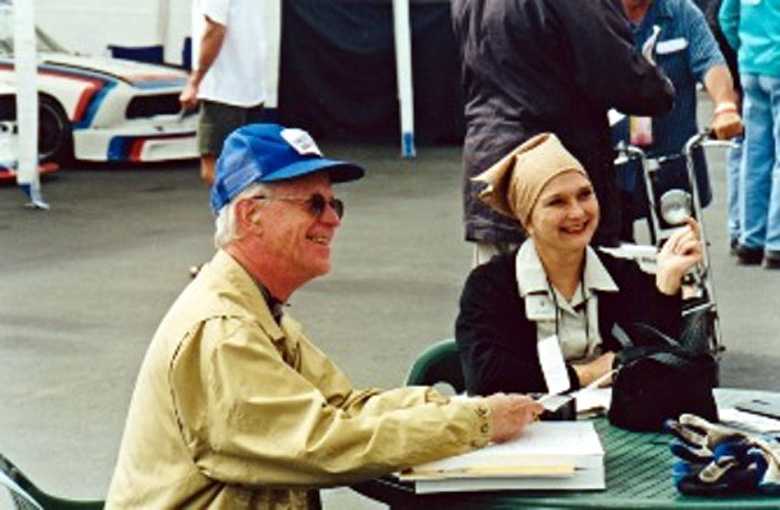
Monterey, California, August 2000. Bill and his wife Elena during an autograph session.(Willem Oosthoek)
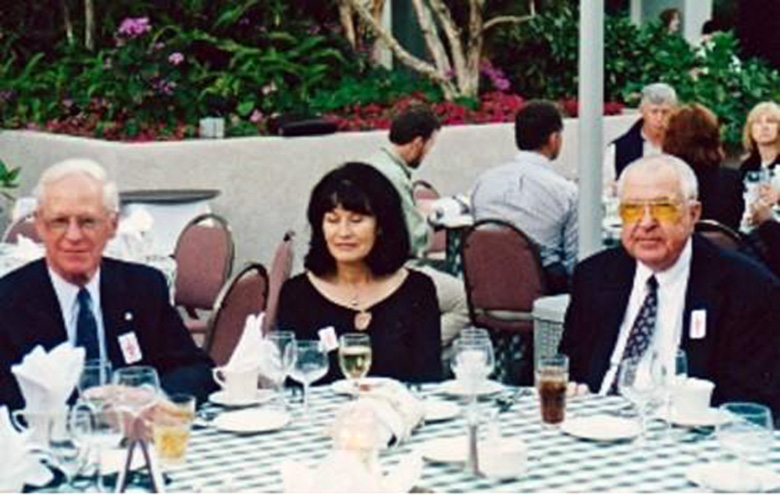
Monterey, California, August 2000. Carroll Shelby and his wife Cleo shared the dinner table with the Kimberlys and Carroll had some good stories to tell about Uncle Jimmy. (Willem Oosthoek)
When asked about his race career, Bill replied: “I considered myself always a true amateur racer. I was not the fastest, but I was fortunate to have been invited to drive a number of exciting cars. I liked endurance racing because, racing intermittently as I did, they gave me a chance to be more competitive. Sort of the first hour or so being just practice, and then I could really get into it.”
When asked in 1997 if he kept up with people from the racing community of the old days? “Bruce McLaren and Richie Ginther were good friends and we stayed in touch for years. Augie Pabst and I get together often, and occasionally I see Phil and Alma Hill, and Bill and Carol Wuesthoff. I definitely see Briggs Cunningham whenever I can, but I am not in California that often. Jesse and Nancy Alexander are also good friends. And Frank Falkner. He is my oldest daughter’s godfather.”
Unfortunately, more recent years were not kind to Bill. Some ten years ago he was diagnosed with the early stages of Alzheimer’s, and in 2011 he and Elena moved to West London to be closer to their daughters. Bill passed away on October 21st, 2017, at the age of 84. A funeral service was held at the Brompton Oratory Church in London, attended by the family and a few close friends.
Upon hearing of Bill’s death, Augie Pabst recalled: “Oh Bill, such a sweet person. We had some wonderful times together. He was my best friend. I loved him very much. He was very special.”
Surprisingly, no newspaper or internet obituary, or even just the news of Bill’s passing (by the SCCA or Kimberly-Clark), was ever published, clearly a result of the fact that he had not been a member of the racing society for more than a decade. After his move to London, his fellow racers of the old days simply lost touch with him. For that very reason we are glad to present this in-depth coverage of his competition career, a long overdue tribute to an affable and self-deprecating personality, who showed excellent racing skills.

Thank you Willem and Veloce Today for the long overdue piece on Bill Kimberly. You guys have documented an important piece of motor racing history that has otherwise been forgotten. Willem’s tenacious and thorough research added detail to the article that a lesser author would not have uncovered.
Thanks Jeff…your comments are very much appreciated!
Outstanding series on Bill Kimberly and a fitting tribute. One of the many lesser known episodes from this fantastic era of motor racing that has been brought to light. Thank you Mr. Oosthoek, job well done!
Thank you and well done, as always.
Very enjoyable series on Bill Kimberley; many thanks.
A fabulous series by Willem Oosthoek, an outstanding presentation of it by Pete Vack. Thank you both for the enjoyment of reading it. — Carl Goodwin
vey nicely done; every couple decades I remember someone referring to bill! it really used to be a sport, didn’t it?
Again thank you, thank you – really enjoyed the series and learning about him.
Thank you and Willem for a well done summary of brother Bill’s racing career. As we were often in different parts of the world at that time, Bill didn’t always fill me in on his racing life. This filled in a lot of blanks.